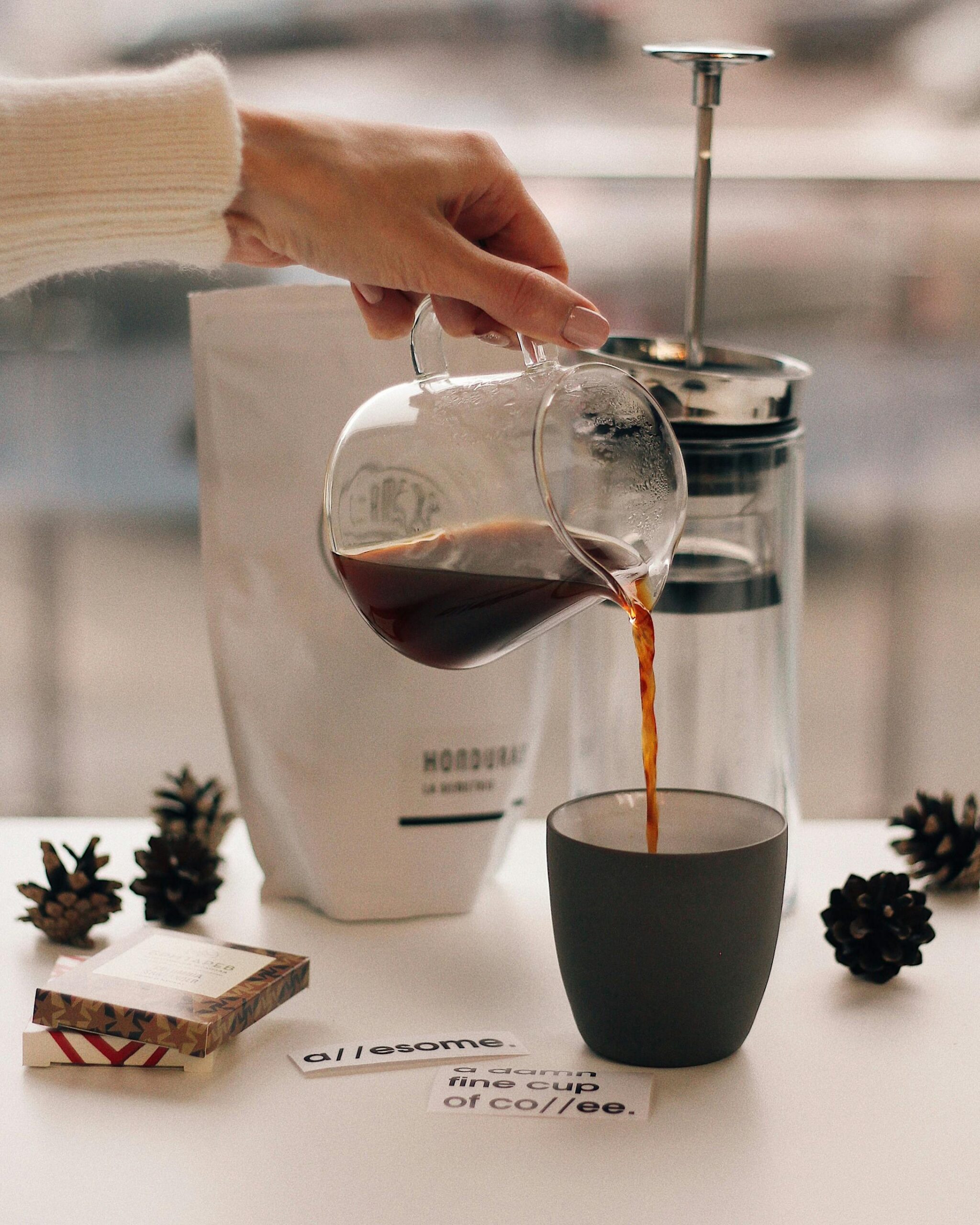Why Water Matters More Than You Think
When we talk about great coffee, most people think of beans, roast levels, and brewing gear. But here’s a truth many overlook: water makes up more than 98% of your cup. That means even the best beans can be ruined—or elevated—by the water you use. This isn’t just about filtered vs. tap; it’s about minerals, chemistry, and balance.
Understanding the role of minerals in water isn’t just for baristas or coffee scientists. If you brew at home and want a better cup, learning the basics of water chemistry can take your coffee experience to the next level.
The Building Blocks: What’s in Your Water?
Water isn’t just H₂O. It comes loaded with minerals and compounds, depending on its source. The main players that affect coffee flavor are:
- Calcium (Ca²⁺)
- Magnesium (Mg²⁺)
- Sodium (Na⁺)
- Potassium (K⁺)
- Chlorides (Cl⁻)
- Bicarbonates (HCO₃⁻)
- Sulphates (SO₄²⁻)
- Total Dissolved Solids (TDS)
Each of these has a unique effect on extraction, flavor clarity, acidity, and mouthfeel.
Calcium and Magnesium: The Extraction Champions
These two minerals contribute to what we call “hardness.” They play a crucial role in extraction, helping pull out the flavor compounds from your coffee grounds.
- Magnesium is known to enhance fruitier, brighter notes, often preferred for more complex cups.
- Calcium, on the other hand, can give your coffee a rounder, heavier body, emphasizing chocolatey or nutty tones.
But here’s the catch: too much hardness can mute flavors, making the cup dull and muddy. It’s all about the right balance.
Bicarbonates: The Acidity Balancers
Bicarbonates act as buffers. They stabilize pH levels and influence acidity. In simpler terms, they can either help you highlight delicate acidity—or completely flatten it.
- If you’ve ever had coffee that tasted bitter or chalky, excessive bicarbonates could be the culprit.
- Conversely, water with too little buffering may lead to an overly sharp, sour cup.
This mineral directly influences your coffee’s brightness and crispness.
Soft Water vs. Hard Water: Which Is Better for Coffee?
Many assume soft water is better for coffee. But it’s not that simple.
- Soft water (low in calcium and magnesium) may under-extract your coffee, leading to weak or underwhelming flavors.
- Hard water (high in these minerals) may over-extract or cause scale buildup in machines, but often pulls out more flavor compounds—up to a point.
The Specialty Coffee Association (SCA) recommends:
- Total Hardness: 50–175 ppm
- Alkalinity (bicarbonates): 40 ppm
- pH: Around 7.0
This range ensures a balanced extraction, clarity, and preserves your equipment.
Tap, Filtered, or Bottled: What Should You Use?
Most tap water contains chlorine and variable mineral levels. If you’re serious about your brew, start by testing your water’s TDS (total dissolved solids). You can find simple test kits online.
Tap Water
Pros:
- Convenient
- Cost-effective
Cons:
- Often has chlorine (which can give your coffee a chemical taste)
- Mineral levels vary wildly
Filtered Water
Using a carbon filter (like Brita or charcoal systems) can remove unwanted chlorine and reduce heavy metals, but may not balance minerals optimally.
Bottled Water
Brands like Volvic, Crystal Geyser, and Third Wave Water offer ideal balances for brewing. But make sure to check the label or brand’s mineral content.
Avoid distilled or deionized water. They contain no minerals, which leads to flat, hollow extractions.
DIY Water for Coffee: Yes, You Can Blend It
If you’re truly obsessed (in the best way), you can customize your brewing water. This is common among pros and home brewers who want consistency.
How?
- Use distilled or reverse osmosis water as a blank canvas.
- Add minerals using kits like Third Wave Water or DIY solutions with Epsom salts (magnesium sulfate), calcium chloride, and baking soda (sodium bicarbonate).
You’ll need precise measurements, but the result can be a noticeable flavor upgrade.
The Flavor Impact: Real Examples
Let’s say you brew a washed Ethiopian with soft water. You might notice:
- Muted florals
- Weak body
- Overly bright acidity
Now try the same coffee with balanced water:
- Clear jasmine and citrus aromas
- Silky mouthfeel
- Clean, sparkling finish
With overly hard water:
- Muted complexity
- Bitter aftertaste
- Chalky mouthfeel
Water isn’t just a vehicle for flavor. It’s a flavor shaper.
Protecting Your Gear: Scale and Corrosion
High mineral content doesn’t just affect flavor—it affects your equipment. Scale (caused by calcium buildup) can:
- Block espresso machine boilers
- Damage kettles
- Shorten machine lifespan
Too-soft water, on the other hand, can corrode metal parts, especially in espresso machines.
That’s why many cafes use custom filtration systems or mineral blends to strike the perfect balance—both for taste and machine health.
Simple Steps to Better Coffee Water at Home
- Test your water
Use a water testing strip or TDS meter. Understand what you’re starting with. - Filter chlorine
Use a carbon filter to remove unwanted chemicals. - Avoid distilled or softened water
You need some minerals for proper extraction. - Try bottled or custom-blend water
Brands like Volvic or mineral kits can change everything. - Taste the difference
Brew the same coffee with different waters. You’ll be amazed.
The Future of Water and Coffee
With climate change, municipal sourcing, and even plumbing affecting water profiles, baristas and coffee lovers are paying closer attention than ever. Some roasters now recommend ideal water specs on their bags. Others offer water profile kits that match their beans’ optimal extraction.
In competitions like the World Brewers Cup, water is seen as an ingredient, not just a background player. And it should be in your kitchen, too.
Final Thoughts: Don’t Underestimate the Invisible Ingredient
You might not see the minerals in your cup, but you’ll definitely taste their impact. Water chemistry can feel like science class at first, but even a basic understanding will help you:
- Brew better-tasting coffee
- Protect your gear
- Appreciate each origin and roast more fully
So next time your brew feels “off,” don’t just blame the beans. Look at what you’re brewing it with. Your perfect cup might start at the tap.

